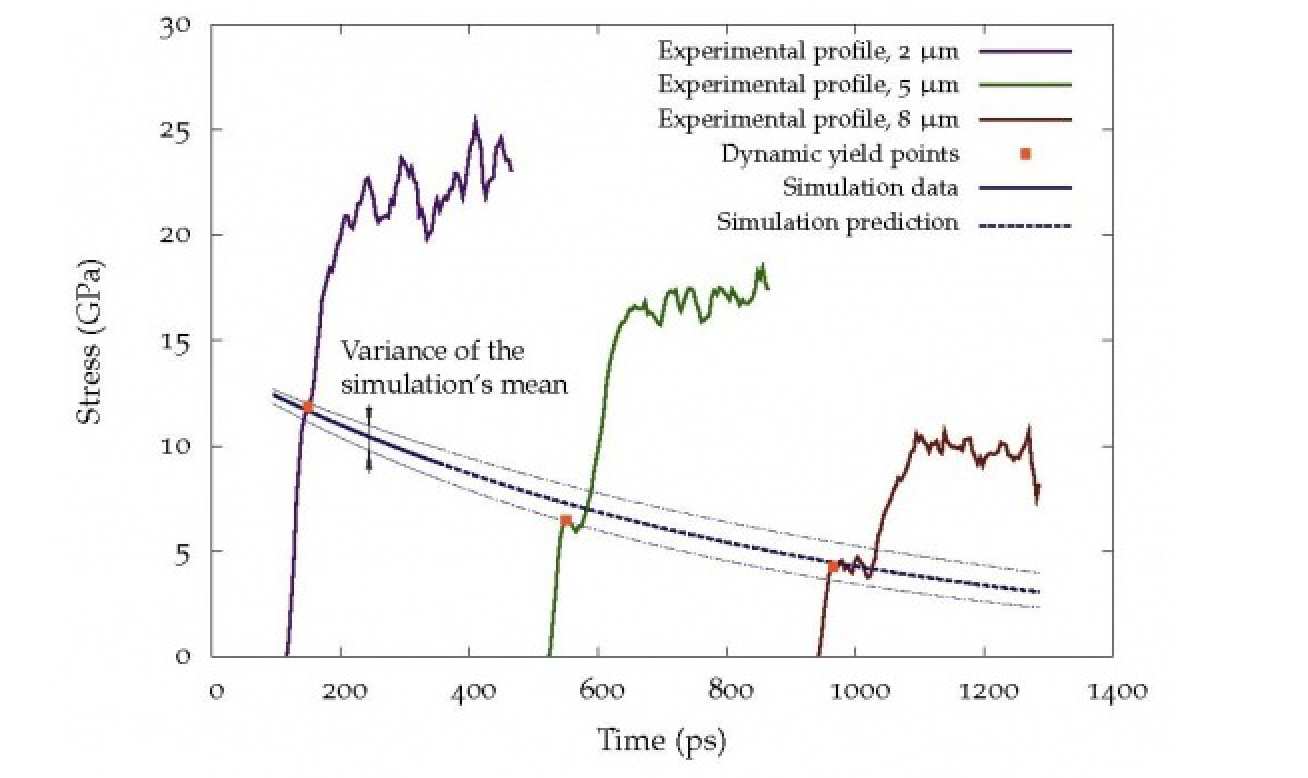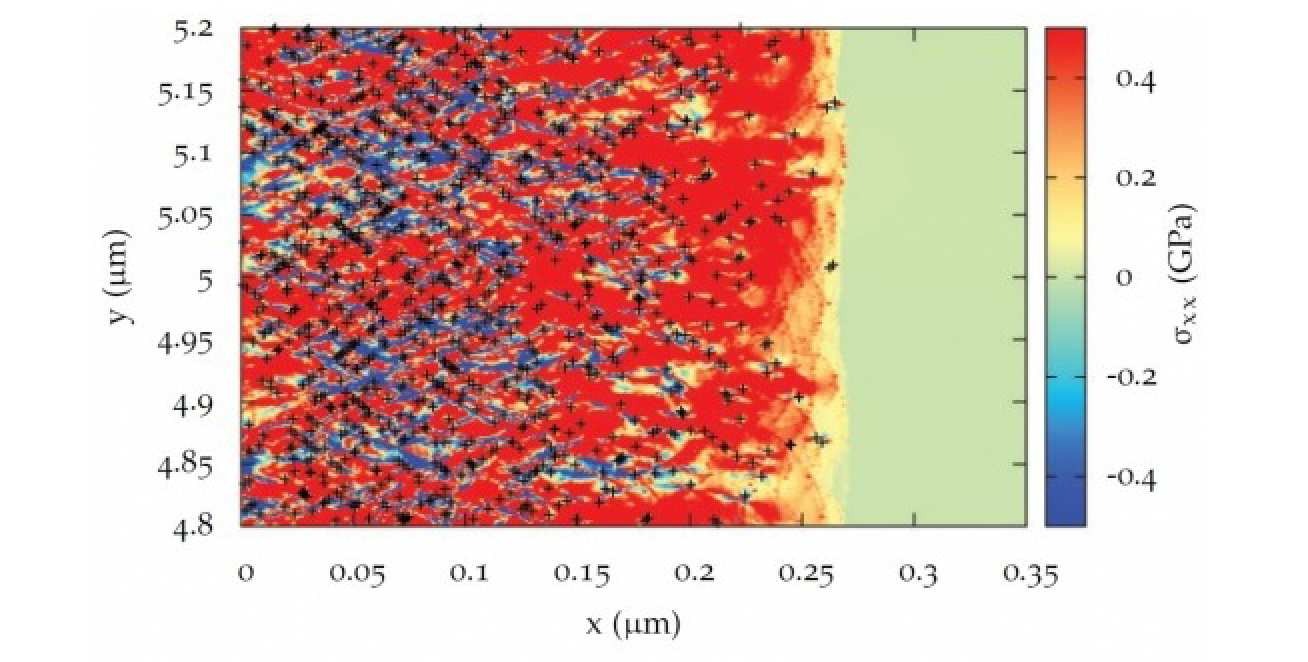An explanation of the attenuation of the dynamic yield point

When a metal is subjected to extremely rapid compressions, it responds by generating a shock wave that propagates through the material. Initially at least, this shock wave propagates at the longitudinal speed of sound, and has few features other than looking like an extremely thin interface that separates a compressed (or shocked) region of the material from the uncompressed (or unshocked) region. However, in metals the shock wave quickly evolves into a characteristic two-wave structure, with an elastic precursor wave preceding a plastic wave front. The elastic precursor wave corresponds to the reversible compressive state of a material, whilst the plastic wave front is associated with irreversible deformation and, therefore, with plasticity and the generation and motion of dislocations.
The microscopic process through which the elastic wave leads to a plastic wave is usually assumed to be similar to that occurring in slowly loaded materials: at a certain threshold stress (the yield point or elastic limit of the material), the dislocations within the material will begin to move and breed, and plasticity will ensue. In this case, this would occur at the peak value of the elastic precursor; in other words, the amplitude of the elastic precursor wave marks the onset of plasticity, so it is the dynamic yield point.
Conventional wisdom holds that for a given material the yield point should be unique; however, in 1953 Campbell (and many others since then) first observed that in fact, the dynamic yield point decays as the wave front advances—a phenomenon known as the ‘decay of the elastic precursor’ or ‘attenuation of the dynamic yield point’. The causes of this attenuation have remained largely unexplained after six decades of study. However, they have been hypothesised to be linked to an unknown dynamic process involving the motion (and sometimes, the generation) of dislocations.
In a recent paper[1], Beñat Gurrutxaga-Lerma (TSM-CDT cohort 2) and his supervisors Daniel Balint, Daniele Dini, Daniel Eakins and Adrian Sutton, offer what constitutes the most complete explanation behind the attenuation of the yield point to date. Employing D3P, the first elastodynamic treatment of the elastic fields of dislocations, they built a fully time dependent model of dislocation dynamics behind a shock wave: they considered each dislocation being generated and moving in a time-dependent manner, and studied their collective interaction with the shock front.
Thanks to their novel formulation, they found that the attenuation of the yield point is a result of the interference of the elastic shock wave with elastic waves emanating from dislocations nucleated in the shock front itself. This wave interference phenomenon is the result of the fields emanating from dislocations nucleated in the shock front due to the large shear stresses achieved there, which their D3P formulation was able to capture for the first time. Albeit generated by the shock front, the wavelets interact so as to relax it, and since they propagate in the same medium, they do so at the same speed as the front; in other words, the interfering fields travel with the shock front, so their effect remains. As more dislocations are generated at the front, their additional wavelets relax the shock front further, leading sequentially to an attenuation of its amplitude, i.e., to an attenuation of the the yield point.
Their results show good agreement between our simulations and experimentally observed decay rates. The effects they have found to be involved in the decay are intrinsically time-dependent, and it has only been thanks to their recently developed D3P methodology that anybody has been able to probe this phenomenon in length and timescales relevant to experiment. Thus, they were able to offer a reasonable explanation of a 60 years old phenomenon.

[1] Beñat Gurrutxaga-Lerma, Daniel S. Balint, Daniele Dini, Daniel E. Eakins, and Adrian P. Sutton (2015), “Attenuation of the dynamic yield point of shocked aluminum using elastodynamic simulations of dislocation dynamics”, Phys. Rev. Lett. 114, 174301, April 2015


